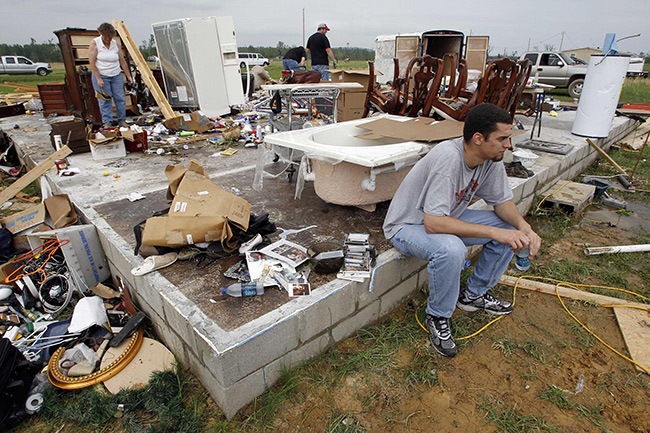
Tornado Sirens StormAware, how does it works?
Some tornadoes strike rapidly, without time for a tornado warning, and sometimes without a thunderstorm in the vicinity. But if there’s a warning, like the Missouri StormAware sirens, it is important to know what to do.
- Tornadoes cause an average of 70 fatalities and 1,500 injuries in the U.S. each year.
- The strongest tornadoes have rotating winds of more than 250 mph.
- Tornadoes can be more than one mile wide and stay on the ground for over 50 miles.
- Tornadoes may appear nearly transparent until dust and debris are picked up or a cloud forms within the funnel.
- The average forward speed is 30 mph but may vary from nearly stationary to 70 mph.
- Waterspouts are tornadoes which form over warm water. They can move onshore and cause damage to coastal areas.
What to do if a Tornado hit your place
- Take cover immediately
- Keep tuned to local radio and TV stations or to a NOAA weather radio
- Pick a place in the home where family members can gather if a tornado is headed your way. One basic rule is AVOID WINDOWS. An exploding window can injure or kill.
- The safest place in the home is the interior part of a basement. If there is no basement, go to an inside room, without windows, on the lowest floor. This could be a center hallway, bathroom, or closet. For added protection, get under something sturdy such as a heavy table or workbench.
In a Mobile Home
- DO NOT STAY IN A MOBILE HOME DURING A TORNADO. Mobile homes can turn over during strong winds. Even mobile homes with a tie-down system cannot withstand the force of tornado winds.
- Plan ahead. If you live in a mobile home, go to a nearby building, preferably one with a basement. If there is no shelter nearby, lie flat in the nearest ditch, ravine, or culvert and shield your head with your hands.
If you live in a tornado-prone area, encourage your mobile home community to build a tornado shelter.
On the Road
- The least desirable place to be during a tornado is in a motor vehicle. Cars, buses, and trucks are easily tossed by tornado winds. DO NOT TRY TO OUTRUN A TORNADO IN YOUR CAR. If you see a tornado, stop your vehicle. Do not get under your vehicle.
Outdoors
Do the following if you are caught outside during a tornado and there is no adequate shelter immediately available:
- Avoid areas with many trees.
- Protect your head with an object or with your arms.
Long-Span Buildings
A long-span building, such as a shopping mall, theater, or gymnasium, is especially dangerous because the roof structure is usually supported solely by the outside walls. Most such buildings hit by tornados cannot withstand the enormous pressure. They simply collapse. If you are in a long-span building during a tornado, stay away from windows. Get to the lowest level of the building–the basement if possible–and away from the windows. If there is no time to get to a tornado shelter or to a lower level, try to get under a door frame or get up against something that will support or deflect falling debris. For instance, in a department store, get up against heavy shelving or counters. In a theater, get under the seats. Remember to protect your head.
Office Buildings, Schools, Hospitals, Churches, and Other Public Buildings
Extra care is required in offices, schools, hospitals, or any building where a large group of people is concentrated in a small area. The exterior walls of such buildings often have large windows. Do the following if you are in any of these buildings:
- Move away from windows and glass doorways.
- Go to the innermost part of the building on the lowest possible floor.
- Do not use elevators because the power may fail, leaving you trapped.
- Protect your head and make yourself as small a target as possible by crouching down.
Shelter for People with Special Needs
Advance planning is especially important if you require assistance to reach shelter from an approaching storm (see specific instructions in the next section).
- If you are in a wheelchair, get away from windows and go to an interior room of the house. If possible, seek shelter under a sturdy table or desk. Do cover your head with anything available, even your hands.
- If you are unable to move from a bed or a chair and assistance is not available, protect yourself from falling objects by covering up with blankets and pillows.
- If you are outside and a tornado is approaching, get into a ditch or gully. If possible, lie flat and cover your head with your arms.


